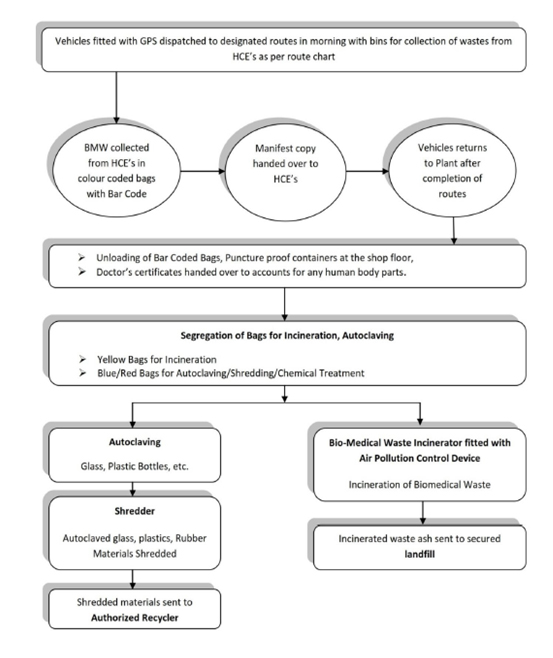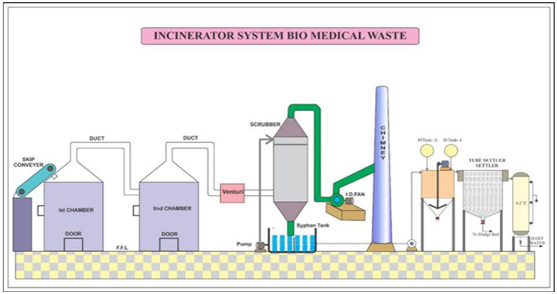

Online Continuous Stack Emission Monitoring System (CSEMS) are being installed in Wise Ecocare plant
as per the rules of Pollution Control Board authorities for the measurement of pollutants within the
stack emission. Monitoring within the stack presents a number of problems due to extremes of
temperature, velocity of sample and pressure. OCEMS is used for continuous emissions monitoring in
biomedical waste incinerators. Presently the emission parameters like CO, CO2, Temperatures of
Primary & Secondary Chambers are uploaded in real time to the servers of MPCB & CPCB, Typically,
concentrations of SO2, NO, NO2, N2O, NH3, O2 and TOC (Total Organic Carbon) can also be continuously
measured.
Continuous Stack Emission Monitoring Systems (OCEMS) accumulates data on a pre-determined time
schedule. The Pollution Control Board can monitor the stack emission online in real-time and it is
self-reporting to the authorities when permit limits are exceeded.

A bio-medical waste incinerator is a specialized facility designed to safely dispose of bio-medical
waste, such as medical sharps, infectious materials, chemicals, and other hazardous materials
generated from healthcare facilities, research laboratories, and similar settings. The incineration
process is used to destroy these potentially infectious and hazardous materials, reducing the risk
of contamination and spread of diseases. Here's an overview of the bio-medical waste incinerator
process:
Waste Collection and Segregation:
Bio-medical waste is collected from various sources, such as hospitals, clinics, laboratories, and
other healthcare facilities. It is important to segregate the waste into different categories based
on its type and potential hazard level. This segregation ensures that different types of waste are
treated appropriately and reduces the risk of cross-contamination.
Loading and Preheating:
The segregated waste is loaded into the incinerator chamber. Before the combustion process begins,
the chamber is preheated to a certain temperature. Preheating helps in achieving efficient and
complete combustion of the waste.
Combustion:
The waste is subjected to high temperatures within the incinerator chamber. In the presence of
sufficient oxygen, the waste undergoes combustion, a chemical reaction that involves the rapid
oxidation of organic materials. This process breaks down complex organic molecules into simpler
compounds, primarily carbon dioxide and water vapor.
Secondary Combustion Chamber:
Some bio-medical waste incinerators use a secondary combustion chamber to ensure complete
destruction of any remaining organic materials and to further reduce emissions. The secondary
chamber provides additional residence time at high temperatures to ensure thorough
combustion.
Exhaust Treatment:
The combustion process produces exhaust gases containing various pollutants and potentially harmful
substances. These gases are directed through a series of pollution control devices to minimize their
environmental impact. Common exhaust treatment components include: